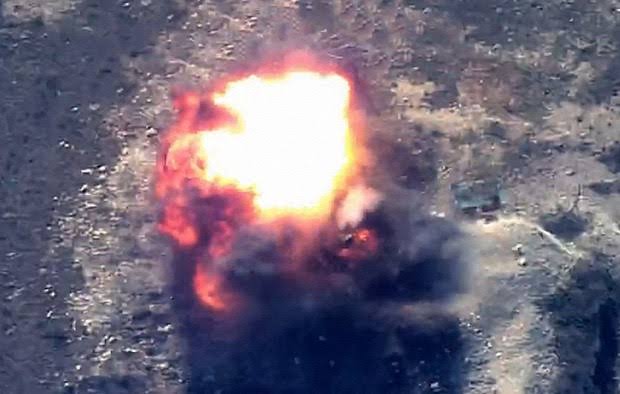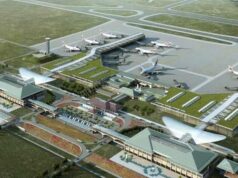Azerbaijan again attacks Armenian position in a breakaway region in the Caucasus Mountains

Azerbaijan’s forces rained artillery fire on Armenian positions in Nagorno-Karabakh on Tuesday, and local officials reported that scores of people — both civilians and troops — were killed and wounded in the fighting.
Ethnic Armenian authorities in the Caucasus Mountains region urged Azerbaijan to sit down for talks, but Azerbaijan’s presidential administration said what it described as an “anti-terrorist operation” will continue until “illegal Armenian military formations” surrender and the separatist government of Nagorno-Karabakh dismantles itself.
The reports raised concerns that a full-scale war in the region could resume between Azerbaijan and Armenia, which have faced off for more than three decades in a conflict over the mountainous territory. The most recent heavy fighting there occurred for six weeks in 2020.
Azerbaijan’s Defence Ministry announced the start of the operation hours after it reported that four soldiers and two civilians died in land mine explosions in Nagorno-Karabakh.
The ministry did not immediately give details but said front-line positions and military assets of Armenia’s armed forces were being “incapacitated using high-precision weapons,” and that only legitimate military targets were attacked.
Armenia’s Foreign Ministry, however, denied its weapons or troops were in Nagorno-Karabakh and called reported sabotage and land mines in the region “a lie.” Armenian Prime Minister Nikol Pashiyan alleged that Azerbaijan’s main goal is to draw Armenia into hostilities.
Ethnic Armenian officials in Nagorno-Karabakh said in a statement that the region’s capital of Stepanakert and other villages were “under intense shelling.” The region’s military said Azerbaijan was using aircraft, artillery and missile systems and drones in the fighting.
Video from the city showed a damaged residential building with shattered windows and damaged cars nearby.
Residents of Stepanakert moved to basements and bomb shelters, and the fighting cut off electricity. Food shortages persisted in the area, with the limited amount limited of humanitarian aid delivered Monday not distributed due to the shelling, which resumed in the evening after halting briefly in the afternoon.
Nagorno-Karabakh human rights ombudsman Geghan Stepanyan said 27 people, including two civilians, were killed and more than 200 others were wounded. According to Stepanyan’s earlier statements, one child was among those killed, and 11 children were among those injured.
The Azerbaijani Prosecutor General’s Office said Armenian forces fired at Shusha, a city in Nagorno-Karabakh under Azerbaijan’s control, from large-caliber weapons, killing one civilian.
Neither claim could be independently verified.
Although Azerbaijan said the operation was limited to military targets, the Defense Ministry said “humanitarian corridors” had been created to evacuate the population.
Thomas de Waal, a senior fellow at the Carnegie Europe think tank, said the military operation could be part of a plan by Azerbaijan President Ilham Aliyev to get ethnic Armenians to leave the area.
Although he said it was still early to assess, it could be “a kind of limited military action which will try to coerce thousands of Armenians to flee to Armenia. And then Aliyev can achieve his objective of taking over Karabakh with not so much bloodshed,” de Waal told The Associated Press.
Earlier Tuesday, Azerbaijan said six people were killed in two separate explosions in the region that is partly under the control of ethnic Armenian forces.
A statement from Azerbaijan’s Interior Ministry, state security service and prosecutor-general said two highway department workers died before dawn when their vehicle was blown up by a mine and that a truckload of soldiers responding to the incident hit another mine, killing four.
Nagorno-Karabakh and sizable surrounding territories were under ethnic Armenian control since the 1994 end of a separatist war, but Azerbaijan regained the territories and parts of Nagorno-Karabakh during the 2020 fighting. That ended with an armistice placing Russian peacekeepers in Nagorno-Karabakh.
However, Azerbaijan alleges that Armenia has smuggled in weapons since then. The claims led to a blockade of the road connecting Nagorno-Karabakh to Armenia, causing food and medicine shortages.
Red Cross shipments of flour and medical supplies reached Nagorno-Karabakh on Monday, but local officials said roads to the region were not fully open.
The hostilities come amid high tensions between Armenia and its longtime ally Russia. Armenia has complained repeatedly that the 2,000-member Russian peacekeeping force was unable or unwilling to keep the road to Armenia open, even though that duty was stipulated in the agreement that ended the 2020 war.
Armenia also angered Russia, which has a military base in the country, by holding military exercises with the United States this month and by moving toward ratifying the Rome Convention that created the International Criminal Court, which has indicted Russian President Vladimir Putin.
Russian Foreign Ministry spokeswoman Maria Zakharova denied Tuesday that Russia was told in advance of Azerbaijan’s intention to mount the operation, saying the peacekeepers were notified only “a few minutes” before it began.
Kremlin spokesman Dmitry Peskov said Moscow was “concerned by a drastic escalation of tensions and the beginning of hostilities” in the region, and that the Russian military was in touch with their Armenian and Azerbaijani counterparts, trying “to bring back the process of settling (the conflict) back onto political-diplomatic track.”
U.S. Secretary of State Antony Blinken said “the use of force to resolve disputes is unacceptable and runs counter to efforts to create conditions for a just and dignified peace in the region.” German Chancellor Olaf Scholz said the Azeribaijani government “must immediately stop the attacks and return to diplomacy.”
Turkish President Recep Tayyip Erdogan, whose country supports Azerbaijan, condemned “the latest negative developments.”
De Waal said the Russian peacekeeping force “has lost probably its best officers to the war in Ukraine” but that “this breakdown in Armenia-Russian relations is a factor here.
“I think it encourages Azerbaijan to be bolder and it makes the Russians more ambiguous and less willing to to intervene. And, you know, it’s quite possible indeed, that the Russians want to use a crisis to instigate regime change in Armenia,” he said.
Thousands of protesters gathered Tuesday in central Yerevan, the capital of Armenia, blocking streets and demanding that authorities defend Armenians in Nagorno-Karabakh. Some clashed with police, who reportedly used stun grenades. A total of 34 people — 16 policemen and 18 civilians — were injured in the clashes, Armenia’s Health Ministry said. About half of them continue to receive medical assistance, the ministry said.
Others rallied at the Russian Embassy, demanding action. The Russian state news agency Tass reported, citing an unidentified source in the diplomatic mission, that the building was blocked by protesters.
Pashinyan said “attempts to draw Armenia into the military escalation are unacceptable” and said that Russian peacekeepers should act, along with the U.N. Security Council.



